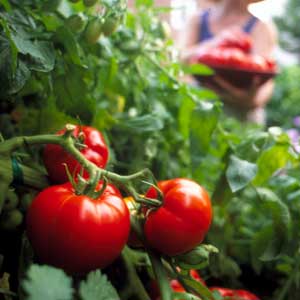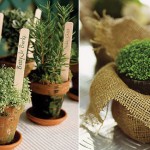
{image via 'This Old House}
I don’t know if you are like me, but I am ready for Spring. Especially on days like today when the typical February weather subsides, and temperatures are about to touch seventy degrees. One of my goals for this year is to start planning and executing my vegetable garden as early as possiblso that I might have early and impressive results by the time my family arrives for my wedding in July. One of the first steps toward this goal is my desire to have early tomatoes. This means starting out my seeds this weekend indoors. i’ve selected several soon-to-be named varieties that specifically bear early, around 55 days. I’ve placed them in paper cups with bottom light. Once the seedlings have four true leaves. I will remove the lowest leaves or cotyledons and transplant them to larger cups, burying the stem to within an inch of the lowest leaves. This serves a purpose in that the buried portion of stem will sprout roots and strengthen the plants stature. You’ll repeat this action during the next transplantation to larger containers and 1-2 more times until the plant possesses more leaves and a round root system. This is entirely antithesis to seedlings you typically buy at nurseries and garden centers, where there is largely more stem and less root system. This intensive transplanting is designed to keep plants growing as if they were already outdoors. Remember that any container you choose must have proper drainage for top and bottom watering. I make every attempt not to get water on the seedlings.
During this process, I will also keep them close and well lit under shop lights. You don’t have to use the grow light spectrum bulbs, it’s an unnecessary expense. It’s best to adopt the philosophy of “too much is never enough” when it comes to lighting indoor seedlings. Shop lights are best, as they can be attached to chains, making their structure adjustable to plant growth and diverse plant needs. Having a light source close to the plants allows them to develop better stem structure and prevents tall spindly plants that may result from lights hung or placed too far away.
Three to four weeks from your last frost date, in preparation for moving the plants outside, dig a hole 18 inches across and 24 inches deep. Place a mixture of nitrogen-rich additives such as kitchen scraps or blood meal into the hole. It will generate warmth as it decays. Cover with good garden soil and plant tomato in the good garden soil.
But with planning ahead, and being prepared comes the need to be ready to adjust to the often unexpected weather patterns that often slip through
the midwest in the spring. To prepare for unexpected frost you must first know the hardiness temperatures in your areas for plants. Visit this website to find your zone and range.
There are many ways to create frost protection covers for plants. you may remember your grandmother’s method of throwing cotton sheets over them, but while that may save them at a moment’s notice when you have no other option, it is never 100% effective. You can find great options and build directions for frost covers here.
After doing thorough research I plant to build medium-sized cages over my planting area, covered with two layers of clear plastic and weighted so it won’t blow away. I believe the set-up is the most easy to take down and put up, so my plants don’t stay covered and overheat on warm days. When temperatures grow consistently warm, I will recycle the materials in to latticing to grow peas or another vining plant.
Starting early and planning for early yield will not only net you successful planting and reusable materials, but more food to feed your family and share with your community.
Pictures forthcoming on Monday!
You may also like







